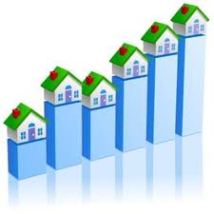U.S. housing market finally reaches a turning point (by Florida Realtors)
NEW YORK – May 16, 2012 – Home values will start to climb again and related consumer industries will grow in 2012 and beyond as the U.S. housing market finally turns the corner, according to a new studyreleased today by The Demand Institute, a new nonprofit, non-advocacy group formed in February by The Conference Board and Nielsen.
According to the Institute, the housing market recovery will have “far-reaching impacts in the coming years across the United States and international markets as U.S. consumers increase their spending on buying, renovating, furnishing and maintaining their homes.”
It also won’t be like earlier recoveries, the Institute suggests, with homestead owners leading the way. Instead, real estate investors buying rentals will supply the homebuying demand.
The Institute’s report, The Shifting Nature of U.S. Housing Demand, predicts that average home prices will increase by up to 1 percent in the second half of 2012. By 2014, home prices will increase by as much as 2.5 percent.
From 2015 to 2017, the study projects annual increases between 3 and 4 percent, though unevenly nationwide. The strongest markets “could capture average gains of 5 percent or more in the coming years.”
“In these initial years, the prime driver of recovery won’t be new home construction, but rather demand forrental properties,” says Louise Keely, chief research officer at The Demand Institute and a co-author of the report. “This is a remarkable change from previous recoveries. It is a measure of just how severe the Great Recession has been that such a wide swath of Americans had to delay, scale back, or put off entirely their dreams of homeownership.”
Bart van Ark, chief economist at The Conference Board and co-author of the report, says he doesn’t expect to see the homeownership rate to change.
“Over 80 percent of Americans in recent surveys still agree that buying a home is the best long-terminvestment they can make,” van Ark says. “What will be intriguing to watch is how their aspirations around homeownership are affected by this period of extended austerity.”
Between 2006 and 2011, some $7 trillion in American wealth was wiped out when home prices dropped 30 percent after dramatic climb in valuations during the housing bubble. Looking forward, the moderate growth expectations for coming years suggest a return to normalcy. As home prices continue to drop and interest rates fall further, first-time buyers and others who remained relatively cautious will be drawn back into the housing market. And, as the market recovers, so too will consumer spending.
“As the U.S. housing market strengthens, almost every consumer-facing industry will be impacted in the coming years,” said Mark Leiter, chairman of The Demand Institute. “Business and government leaders will benefit by fully understanding the nature of this recovery. In doing so they will be better able to anticipate how consumer demand will evolve, and to formulate critical business and policy decisions to lead their organizations.”
Key findings
In addition to the projected gains in home prices, the report discusses in detail the dynamics at work in the U.S. housing market and the impacts across industries. What follows are highlights from the report:
• The recovery will be led by demand from buyers for rental properties, rather than, as in previous cycles, demand from buyers acquiring new or existing properties for themselves. More than 50 percent of those planning to move in the next two years say they intend to rent.
• Young people and immigrants will lead the demand for rental properties. Developers and investors will fulfill it: developers by building multifamily homes for rent, and investors by buying foreclosed single-family properties for the same purpose.
• Rental demand will help clear the huge oversupply of existing homes for sale. In 2011, some 14 percent of all housing units were vacant, while almost 13 percent of mortgages were in foreclosure or delinquent – increases of 12 and 129 percent respectively over 2005 levels. It will take two to three years for this oversupply to be cleared, and at that point homeownership rates will rise and return to historical levels.
• The housing market recovery will not be uniform. Some states will see annual price gains of 5 percent or more. Others will not recover for many years. The deciding factors will include the level of foreclosed inventory and rates of unemployment.
• There will also be vast differences within states. Here, additional factors count, such as whether local amenities, including access to public transport, are within walking distance of homes. The report looks at seven factors and then sorts cities and towns into four categories, with each category predicting the speed of a local home price recovery.
• The average size of the American home will shrink. Many baby boomers who delayed retirement for financial reasons during the recession will downsize. They will not be alone. Most Americans will scale back their housing aspirations. The size of an average new home is expected to continue to fall, reaching mid-1990s levels by 2015.
• Consumer industries including financial services, home furnishings and home remodeling will experience shifts in demand and new growth opportunities. Part of this spending is linked to increases in wealth from improving home valuations, while an even bigger part is tied to the “transaction” of buying or selling the home which sets in motion increased demand for a wide range of products and services.
• Despite the number of Americans who have been hurt financially by the housing crash, the desire to own a home remains strong. The Institute doesn’t expect to see a long-term drop in ownership rates.
© 2012 Florida Realtors®

